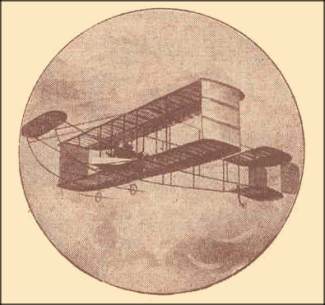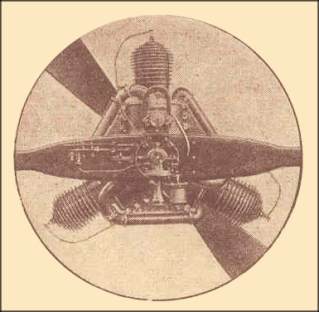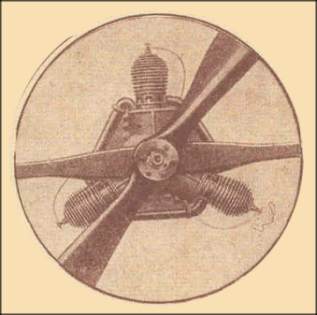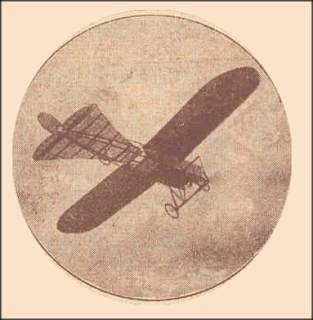Beautifully engraved certificate from the Le Moteur Laviator issued in 1911. This historic document has an ornate border around it with a vignettes of early planes and engines. This item is hand signed by the Company's Administrateurs and is over 90 years old. 
Certificate Vignette 
Certificate Vignette 
Certificate Vignette Exhibited in the Paris Aero Exhibition of 1912, the Laviator two-stroke cycle engine, six-cylindered, could be operated either as a radial or as a rotary engine, all its pistons acting on a single crank. Cylinder dimensions of this engine were 3.94 inches bore by 5.12 inches stroke, and a power output of 50 horse-power was obtained when working at a rate of 1,200 revolutions per minute. Used as a radial engine, it developed 65 horse-power at the same rate of revolution, and, as the total weight was about 198 lbs., the weight of about 3 lbs. per horse-power was attained in radial use. Stepped pistons were employed, the annular space between the smaller or power piston and the walls of the larger cylinder being used as a charging pump for the power cylinder situated 120 degrees in rear of it. The charging cylinders were connected by short pipes to ports in the crank case which communicated with the hollow crankshaft through which the fresh gas was supplied, and once in each revolution each port in the case registered with the port in the hollow shaft. The mixture which then entered the charging cylinder was transferred to the corresponding working cylinder when the piston of that cylinder had reached the end of its power stroke, and immediately before this the exhaust ports diametrically opposite the inlet ports were uncovered; scavenging was thus assisted in the usual way. The very desirable feature of being entirely valveless was accomplished with this engine, which is also noteworthy for exceedingly compact design. 
Certificate Vignette

Certificate Vignette

Certificate Vignette

Certificate Vignette

Certificate Vignette










